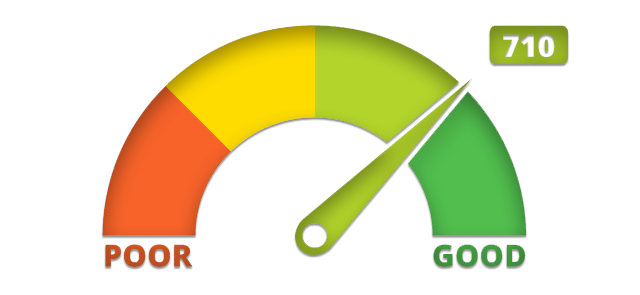
There are many free stock trading courses available. IIM Bangladore and LearnVern are just a few examples. Bulls on Wall Street is another. Udemy is also a good option. Each one has its advantages and drawbacks. Make sure you are comfortable with the choice you make.
IIM Bangladore
An online stock market course is available to students interested in investing. The course will teach students basic stock market concepts and investment strategies. The course also teaches students about technical analysis, helping them to identify trends and patterns in the market. This course covers important topics like fundamental analysis, technical analysis, derivatives, and more. Participants can also benefit from the course's 50 supplementary videos and full-length test.
This online course is for novices who are interested in learning more about the stock market. It contains 9 lessons and covers 10 topics. Each lesson concludes with additional material. Students can also use a virtual trading account to trade stocks in real-time. The students can access the account as many times they wish until they feel comfortable. The course teaches the fundamentals of the stock market. This includes how earnings are calculated and how charts can be interpreted.

LearnVern
LearnVern offers no-cost stock trading courses to anyone interested in getting started in stock market. Experts with extensive industry experience teach the courses. The courses also include comprehensive guides for trading stocks and establishing an account. These courses are industry-relevant, and can easily be completed from any device.
Despite the fact that some online courses offer more content than others, LearnVern's courses provide an industry-relevant education. The modules cover the various trading strategies available and how to assess them. They also cover chart patterns, risk management and technical analysis. The courses include practical training in vocabulary and techniques for the trading floor.
Bulls on Wall Street
Bulls On Wall Street stock trading classes are designed to help you learn how to trade the market. They are targeted at new traders and offer mentorship, material, and a friendly trading community. Their greatest strength is their extensive video content. This is a great feature for traders who don't have the time or desire to read through books or take live classes.
Bulls On Wall Street stock trade courses online are absolutely free. But, it does require that you do your homework. You must remain disciplined and committed throughout the learning journey. This system is not designed to guarantee instant success. The majority of the readers don't have the discipline to put in the work. Many people watch email gurus and seminars for advice but don't follow through or study the concepts.

Udemy
There are many advantages to becoming a stock trader, and the demand for skilled traders continues to grow. Many companies are seeking investment advisors or financial planners. It can be very helpful to have a good understanding of the stock exchange for job searches. These courses are free and can help you gain a better understanding of the stock exchange.
A free online stock trading course can teach you the fundamentals of investing, including understanding the stock market and investing strategies. It will also teach you how to evaluate your portfolio's performance and identify your own biases. The course will provide advice on how to choose stocks to invest in a portfolio, and which brokers to choose.
FAQ
Do I really need an IRA
An Individual Retirement Account (IRA) is a retirement account that lets you save tax-free.
To help you build wealth faster, IRAs allow you to contribute after-tax dollars. They also give you tax breaks on any money you withdraw later.
IRAs are especially helpful for those who are self-employed or work for small companies.
Many employers also offer matching contributions for their employees. If your employer matches your contributions, you will save twice as much!
What do I need to know about finance before I invest?
You don't need special knowledge to make financial decisions.
You only need common sense.
These are just a few tips to help avoid costly mistakes with your hard-earned dollars.
Be cautious with the amount you borrow.
Don't fall into debt simply because you think you could make money.
Be sure to fully understand the risks associated with investments.
These include inflation as well as taxes.
Finally, never let emotions cloud your judgment.
It's not gambling to invest. You need discipline and skill to be successful at investing.
This is all you need to do.
What types of investments do you have?
There are many investment options available today.
These are some of the most well-known:
-
Stocks - A company's shares that are traded publicly on a stock market.
-
Bonds are a loan between two parties secured against future earnings.
-
Real estate - Property owned by someone other than the owner.
-
Options - These contracts give the buyer the ability, but not obligation, to purchase shares at a set price within a certain period.
-
Commodities-Resources such as oil and gold or silver.
-
Precious Metals - Gold and silver, platinum, and Palladium.
-
Foreign currencies - Currencies outside of the U.S. dollar.
-
Cash - Money which is deposited at banks.
-
Treasury bills – Short-term debt issued from the government.
-
A business issue of commercial paper or debt.
-
Mortgages - Loans made by financial institutions to individuals.
-
Mutual Funds: Investment vehicles that pool money and distribute it among securities.
-
ETFs: Exchange-traded fund - These funds are similar to mutual money, but ETFs don’t have sales commissions.
-
Index funds – An investment strategy that tracks the performance of particular market sectors or groups of markets.
-
Leverage is the use of borrowed money in order to boost returns.
-
ETFs - These mutual funds trade on exchanges like any other security.
These funds are great because they provide diversification benefits.
Diversification can be defined as investing in multiple types instead of one asset.
This helps protect you from the loss of one investment.
Can passive income be made without starting your own business?
It is. In fact, most people who are successful today started off as entrepreneurs. Many of them started businesses before they were famous.
For passive income, you don't necessarily have to start your own business. You can create services and products that people will find useful.
You might write articles about subjects that interest you. You could also write books. Consulting services could also be offered. You must be able to provide value for others.
What kind of investment vehicle should I use?
Two main options are available for investing: bonds and stocks.
Stocks represent ownership stakes in companies. Stocks are more profitable than bonds because they pay interest monthly, rather than annually.
Stocks are the best way to quickly create wealth.
Bonds offer lower yields, but are safer investments.
You should also keep in mind that other types of investments exist.
They include real property, precious metals as well art and collectibles.
How do I determine if I'm ready?
You should first consider your retirement age.
Is there an age that you want to be?
Or would you rather enjoy life until you drop?
Once you have set a goal date, it is time to determine how much money you will need to live comfortably.
Next, you will need to decide how much income you require to support yourself in retirement.
Finally, determine how long you can keep your money afloat.
Statistics
- If your stock drops 10% below its purchase price, you have the opportunity to sell that stock to someone else and still retain 90% of your risk capital. (investopedia.com)
- 0.25% management fee $0 $500 Free career counseling plus loan discounts with a qualifying deposit Up to 1 year of free management with a qualifying deposit Get a $50 customer bonus when you fund your first taxable Investment Account (nerdwallet.com)
- They charge a small fee for portfolio management, generally around 0.25% of your account balance. (nerdwallet.com)
- As a general rule of thumb, you want to aim to invest a total of 10% to 15% of your income each year for retirement — your employer match counts toward that goal. (nerdwallet.com)
External Links
How To
How to Save Money Properly To Retire Early
Retirement planning involves planning your finances in order to be able to live comfortably after the end of your working life. It's when you plan how much money you want to have saved up at retirement age (usually 65). You also need to think about how much you'd like to spend when you retire. This includes travel, hobbies, as well as health care costs.
You don’t have to do it all yourself. Many financial experts can help you figure out what kind of savings strategy works best for you. They will examine your goals and current situation to determine if you are able to achieve them.
There are two main types: Roth and traditional retirement plans. Roth plans allow you to set aside pre-tax dollars while traditional retirement plans use pretax dollars. The choice depends on whether you prefer higher taxes now or lower taxes later.
Traditional Retirement Plans
A traditional IRA lets you contribute pretax income to the plan. Contributions can be made until you turn 59 1/2 if you are under 50. You can withdraw funds after that if you wish to continue contributing. After turning 70 1/2, the account is closed to you.
If you've already started saving, you might be eligible for a pension. These pensions vary depending on where you work. Many employers offer match programs that match employee contributions dollar by dollar. Other employers offer defined benefit programs that guarantee a fixed amount of monthly payments.
Roth Retirement Plans
Roth IRAs allow you to pay taxes before depositing money. You then withdraw earnings tax-free once you reach retirement age. There are however some restrictions. However, withdrawals cannot be made for medical reasons.
A 401 (k) plan is another type of retirement program. These benefits are often offered by employers through payroll deductions. Additional benefits, such as employer match programs, are common for employees.
401(k), plans
Most employers offer 401k plan options. With them, you put money into an account that's managed by your company. Your employer will automatically contribute a percentage of each paycheck.
You decide how the money is distributed after retirement. The money will grow over time. Many people take all of their money at once. Others distribute the balance over their lifetime.
Other Types Of Savings Accounts
Some companies offer additional types of savings accounts. At TD Ameritrade, you can open a ShareBuilder Account. You can also invest in ETFs, mutual fund, stocks, and other assets with this account. Additionally, all balances can be credited with interest.
Ally Bank offers a MySavings Account. Through this account, you can deposit cash, checks, debit cards, and credit cards. You can also transfer money from one account to another or add funds from outside.
What to do next
Once you know which type of savings plan works best for you, it's time to start investing! First, find a reputable investment firm. Ask friends or family members about their experiences with firms they recommend. Also, check online reviews for information on companies.
Next, you need to decide how much you should be saving. This is the step that determines your net worth. Net worth can include assets such as your home, investments, retirement accounts, and other assets. It also includes liabilities like debts owed to lenders.
Once you know how much money you have, divide that number by 25. This is how much you must save each month to achieve your goal.
If your net worth is $100,000, and you plan to retire at 65, then you will need to save $4,000 each year.